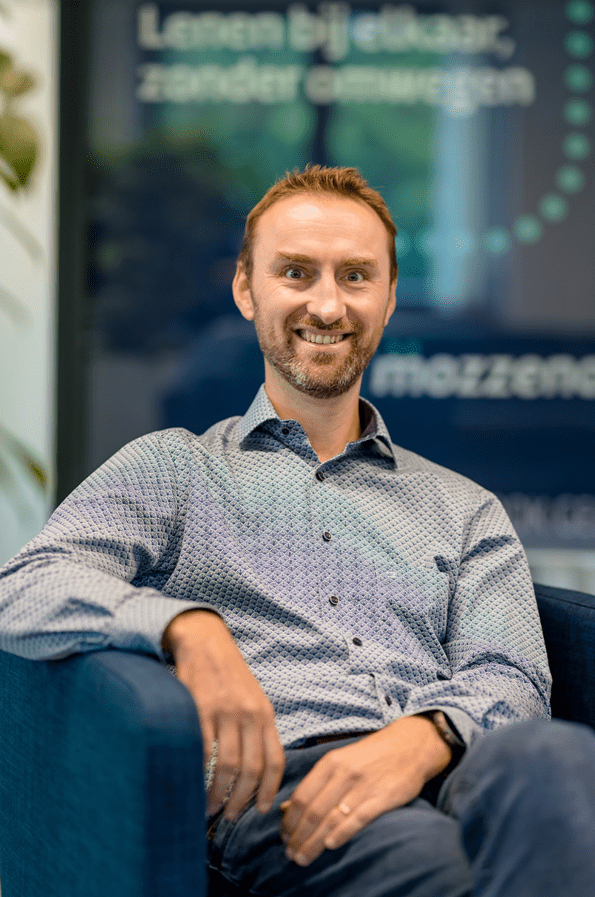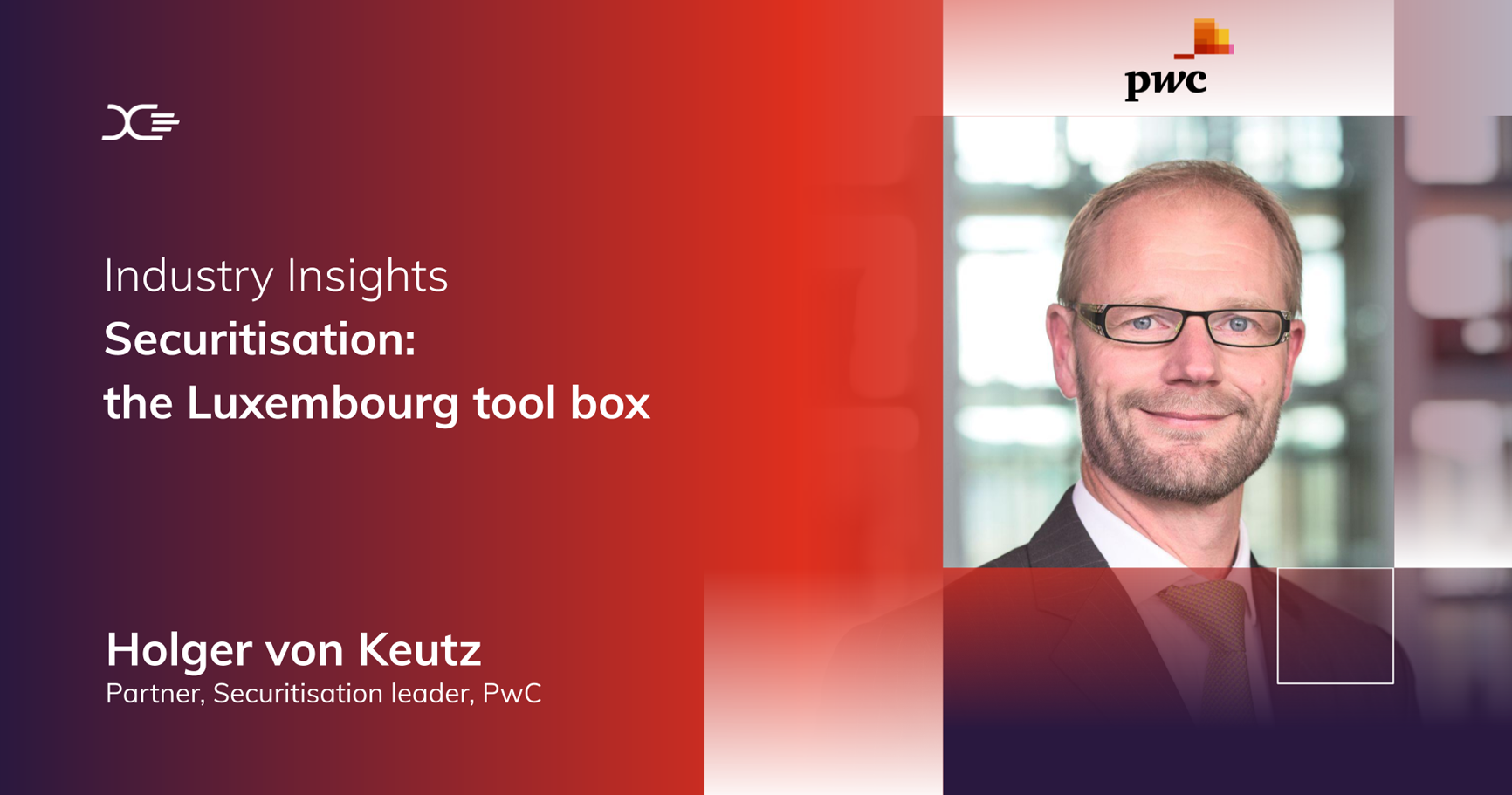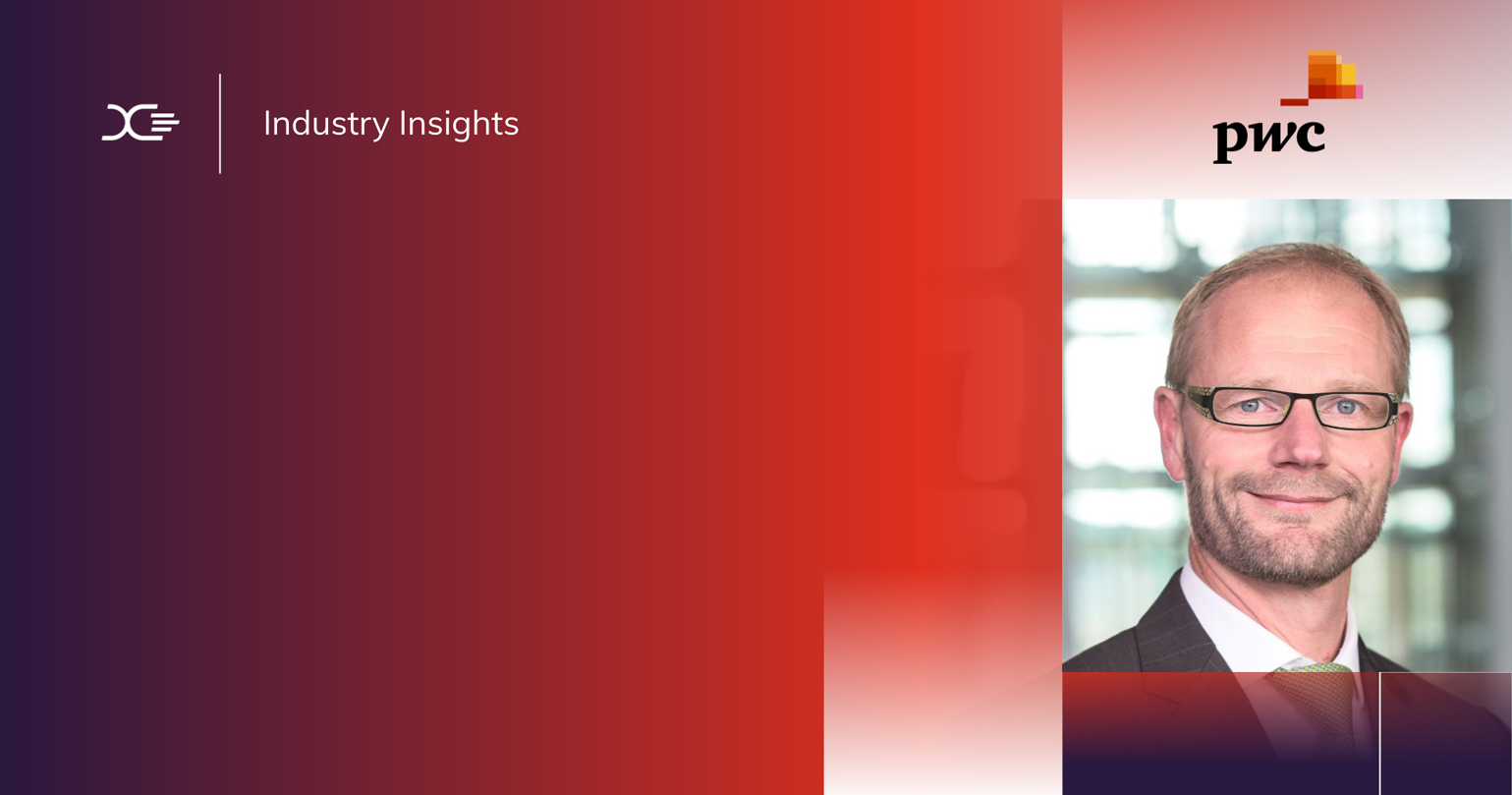Originator Spotlight/Mozzeno
One of Belgium’s largest peer-to-peer lending platforms, mozzeno, saw solid growth in 2021, with origination volumes exceeding 30 million euros. That growth was in part enabled by signing on new institutional investors in 2019. The platform caters mainly to consumer financing, though it also added business lending in 2021.
Frédéric Dujeux, co-founder of mozzeno, joined us to speak about the importance of attracting institutional investment. He gave us his perspective on Belgium’s unique regulatory environment for collaborative lenders. Frédéric also highlighted mozzeno’s widespread use of insurance guarantees on loans, which can reduce investor risks while dampening yields.

Marco Hinz: Please could you introduce mozzeno, especially your market, your customer base, and your main points of differentiation?
Frédéric Dujeux: The name mozzeno comes from ‘money’ and ‘zen’. We are a collaborative platform that started in February 2017, so we’ve just turned five years old. Originally and primarily, our focus is on originating consumer loans digitally. Last year, we added lending to SMEs as well. What’s important to know is that the regulatory framework in Belgium is quite tough compared to the frameworks for P2P lending platforms in place elsewhere in Europe. You cannot as a borrower request a loan from other individual lenders, whether alone or through a platform – you can only request loans from regulated lenders, not from individuals. Therefore we use an indirect model, meaning that as a regulated lender, the loan is originated from our balance sheet, unlike the direct model used by P2P platforms in most other markets where individual investors participate in loans. We refinance the loans on our balance sheets using financial instruments – a series of notes – that we can offer to retail investors or institutional investors. This indirect approach was the only model that could be used in compliance with the Belgian regulation, and that’s why we call it collaborative lending. Due to this hurdle, pure peer to peer lending platforms were not present in Belgium before we were founded.
Marco Hinz: On a typical P2P platform, investors can choose which borrowers to fund – is that the same with mozzeno?
Mr. Dujeux: Absolutely. In terms of the experience for the investors, we try to come as close as possible to the standard P2P approach, so investors can pick the different loans. The refinancing that we are doing through a series of notes is on a loan by loan basis. The investors can see the characteristics of the loan such as the amount, the purpose, and some information about the borrower’s profile. This is the case for each series of notes we generate for each specific loan. Of course, the process is anonymous when it comes to consumer loans for privacy reasons. Ultimately, investors can pick loans either manually or automatically by setting filters and investment rules.
Marco Hinz: Last year, you onboarded Fédérale as a funding investor and shareholder. What have been the benefits of this for your operation? Did your existing retail investor base see some benefits as a result?
Mr. Dujeux: Fédérale Assurance first began as an institutional investor on the platform in December 2019. They have renewed and increased their commitment several times since then. Aside from that, they are also equity investors – they were the lead investor in our most recent equity round in July 2020. Fédérale, and the other institutional investors we have onboarded, bring credibility to our funding. When we do a marketing push on the borrower side, if we grow our originations, we know we have the funding in place. With retail investors there is always an element of seasonality – for example, their participation may drop during some periods such as holidays. The most important benefit of institutional funding was that it allowed us to pre-finance the loans. Initially, when we started, we had to make proposals to borrowers and to our investor base at the same time, and we needed complete subscriptions from retail investors before we could pay out any loans. It was not ideal. With pre-finance, we can pay out loans without waiting for retail investors.
Marco Hinz: What is the split between retail and institutional investors on your platform?
Mr. Dujeux: As a principle, we ensure that retail investors can invest in each and all loans we are originating. When it comes to the split between retail and institutional investors for a given loan, there is some variation in distribution and selection – for example, institutional investors are more willing to select longer duration loans to invest in.
Marco Hinz: For institutional investors, what is their motivation to be active on your platform, what benefits do they see, and do they have any concerns? If so, how do you mitigate them?
Mr. Dujeux: We have two structures for investors – either we issue bonds for them to subscribe to, or the second approach is to set up a true sale transaction using a special purpose vehicle (SPV). Both approaches have different benefits.
Bonds are very easy to set up and there is no structuring cost – we do all the reporting on a loan-by-loan basis. You can set this up with a very low volume. Investors in bonds are exposed to the counterparty risk of mozzeno. To mitigate that, mozzeno has been set up as a bankruptcy remote vehicle. We have a split structure, with mozzeno services SA, which is the operational company, and mozzeno SA with a highly protective, bankruptcy remote structure, which almost cannot make a loss – it takes all the revenues, but has very few costs. Servicing fees between the two companies are limited contractually. That has reassured Fédérale and investors that the risks have been mitigated.
Investing in loans through a true sale transaction and a SPV is particularly suitable for insurers and other financial institutions. The assets (loan receivables) are sold to the SPV, resulting in the removal of the counterparty risk on mozzeno and allowing investors to leverage the credit rating of the credit insurer with obvious solvency capital requirement (SCR) benefits. Of course, the setup and running costs are higher with this investment structure, so this requires a higher volume, which we have now achieved.
Marco Hinz: So where do investors see the greater risk – the credit risk from borrowers or the counterparty risk as you’ve described it?
Mr. Dujeux: The risk of default of the borrower is typically not the issue, because most of our loans are insured by a credit insurer and typically, this is the target for our institutional investors. So, the risk of defaults of the borrower is transferred to a credit insurer. The counterparty risk of mozzeno we have covered with the SPV structure.
Marco Hinz: Is this use of credit guarantees on consumer loans specific to Belgium?
Mr. Dujeux: I think it’s relatively unique to Belgium. As an example, Atradius, our credit insurer partner in Belgium, is commercially active in many countries for other products – mainly invoice finance and factoring – but when it comes to covering consumer instalment loans, they are only doing that in Belgium.
Marco Hinz: Can you share with us the total origination volume on your platform last year and your outlook for 2022?
In 2020, we originated 11 million euros. Last year, it was around 31 million – so almost triple. We expect to originate 65 million euros this year. It’s very early in the year, but in January and February we were at least on this trend. We’ve seen good traction in the last quarters.
Marco Hinz: What were the main drivers of that growth? Is it just about funding?
Mr. Dujeux: The fact the funding was more stable is helpful, in the sense that it has allowed us to focus on the borrower side. There has been an increase in our marketing investment, and I would say now we can predict fairly well what we need to spend on marketing in order to generate a specific origination volume. That was not the case at the beginning, to find this, we needed enough volume to measure our KPIs and have the scale effect in play as well. We are now refining our formula, to grow the volume while keeping the price of acquisition under control. We also see a lot of repeat business from existing customers and word of mouth referral, as our customers are typically very happy with our service.
Marco Hinz: Are there any channels that work better than others?
Mr. Dujeux: There are some that are working better than others, but this can also change over time. So we have diversified our sources of acquisition. We have the usual suspects like Google, Facebook, and other social media adverts. We also work a lot with local comparison sites where customers can simulate their applications. We don’t work with financial brokers that are working with other lenders, as we cannot really compete with other lenders on the commission they will get, because we have a funding cost that is different from banks. But we are looking at this channel, and we can compete with better processes, a lot less paperwork for the broker, and we can take over the remarketing – the reminders sent to loan applicants when they find themselves stuck in the process. We think this can represent a USP that is equally profitable for the broker, even if the commission is reduced. We also work with some retailers which are selling products that are typically funded by loans, such as secondhand cars.
Marco Hinz: When it comes to investor returns, what are some of the trends you see in your market? What has been the historical performance for your investors?
More than 90% of the loans on our platform are insured, and of this volume, since we started, we have consistently delivered 3.5% to investors, net of any fees and net of the impact of default, since the insurance covers this.
Marco Hinz: Do you offer a secondary market option to your private investors?
Mr. Dujeux: Initially we didn’t offer that on the platform, but we launched a related feature two years ago. We don’t allow investors to sell their notes to other investors on the platform. But investors have the option to request that mozzeno buys back their notes. We can accept or decline the request, though so far, we have always accepted these requests. There is a small fee to cover our costs on the transaction. This is one advantage of having institutional investors on the platform for retail investors, as it is their funds which are used to buy back the notes. Once this is done, a note can be reissued for the same underlying asset, and refinanced again via other investors. So it’s an indirect way of handling a secondary market. It works well, because if an investor wants to sell their notes after a year, and the remaining duration is three years, they have been through a seasoning period and the rate on the remaining term will be higher than on the primary market, so the refinancing of notes that have been bought back is quite attractive for investors.
Marco Hinz: What advice would you give to newer digital lenders, for example, when you started in 2017, were there any mistakes you made that with hindsight you would avoid?
Mr. Dujeux: I would say there are three things. Firstly, when we first began our lending operations, we had to finance loan requests in real time through investment. That means that borrowers had to wait for loan approval, and we had to try to explain to them the reason why. We should have raised more funding or dedicated equity to that.
Secondly, in our early days, we were positive about credit insurance since it would reduce investor risk, but we also wanted to have the option for higher rates. We chose to offer loans that were insured 100%, and some that were insured at 80% and 60%. This was complex to understand for the average retail investor, because this indemnity percentage is applied based on the outstanding amount and not the investment amount, and it is paid out irrespective of the actual recovered amount on the defaulted loan. When we started seeing the first defaults on notes protected with 80 or 60% insurance, some investors were quite confused by the concept, and we had to spend a lot of time explaining how it worked. We ultimately stopped offering partially insured loans and re-introduced non-insured loans later.
Finally, there were two periods where we pulled back from marketing efforts – one was just before we signed on the first institutional funding. During this period, we were focused on onboarding the investor and our funding was unreliable at that time; and the second time was in March 2020 when the Covid crisis initially materialised in the middle of our equity round (which we finally closed in July 2020). With hindsight, it was a mistake to reduce marketing efforts; we should have looked for alternative solutions, because in both cases, we lost momentum and it took two to three months to relaunch the growth engine.
The algorithms used for online ad optimisation need to develop continually, you cannot freeze the process. This is something to consider when you’re looking at scaling back marketing activities.
Marco Hinz: What are some of your plans for the future? Does expansion outside Belgium look attractive or not?
Mr. Dujeux: We are considering expanding both our products and markets. When it comes to products, we have launched loans for SMEs and freelancers and our insurance partner is also active in those spaces. We don’t lend to newly founded companies as our analysis requires access to historical financial data. This line of business is developing quite well, though it takes time. We are partnering with ecosystems such as associations, ERP platforms, and payroll companies where SMEs are active – this is a different approach than the purely direct approach that we started with for consumer loans.
We are also currently piloting a buy now pay later product, where we collaborate with merchants, offering this type of credit facility as an alternative payment method. The regulations on BNPL in Belgium are quite tough. The approach of major international players in Belgium has been to avoid being exposed to the consumer loan regulations by only offering payment durations shorter than 60 days, which is the threshold. That means that Belgium is not the most popular market for these big companies, since there is the requirement to offer services in two or three languages, plus the limit on the product offering. Our USP in this space is that we can work within the constraints of the regulation as well, and provide a broader mix of payment options – after all, our core business is to offer regulated loans fully digitally.
When it comes to other markets, we are currently investigating which country it would be most relevant to extend our activities to from 2023.
Marco Hinz: Let’s talk about credit risk. As you’ve detailed, your platform makes use of insurance to protect investors. How does the process work?
Mr. Dujeux: Initially, the borrower completes his application online. Once it is complete, we assess the loan application from different angles.
Firstly, we check the credit database at the National Bank, where all regulated lenders have to register originated credits and defaults.
Then we apply our own scoring – we have invested in scoring technology from day one and we have our own data scientist team. We progressively collect more innovative data, like connecting through PSD2 to retrieve bank statements, collecting data from open data systems, and collecting information on payment behaviour. Especially for non-insured loans, we are building models that use non-traditional data points, so that we can provide loans to individuals who have no credit history but who have a good profile – typically things that are not well scored by traditional systems, including the credit insurer’s.
At this stage, we share details of eligible loan applications on our platform with the insurer via API for them to assess each application individually. If they approve the coverage, they will give some conditions. This can include basic requirements such as securing evidence of income or revenue. But the insurer could also request additional documentation such as proof of home ownership, etc.
Marco Hinz: Does the insurer ever reject applications you have given provisional approval on?
Mr. Dujeux: It can happen. In the case of a potential decline, we can look for ways to improve credit quality to change the outcome of the borrower’s assessment, such as adding an additional co-borrower to the application, personal guarantors, or by reducing the loan size they are applying for. Another solution may be to actually borrow more and use the remainder to refinance other outstanding loans, resulting in a more sustainable budgetary situation. We can also grant the loan without insurance if we are confident through our innovative scoring that the profile is interesting but atypical for traditional scoring.
Marco Hinz: And what is the process around resolution in case of delinquency?
Mr. Dujeux: During the first 90 days of delinquency, we carry out what we call soft collection. This is highly automated, it can also include some calls, but it mainly takes place via email, SMS, or PostMail with registered mail. After 90 days, if there is no resolution in the meantime, we have to declare the default of the loan. In effect, we sell the receivable to the insurer, and we get the indemnity. After that, it’s their business to do the debt recovery.
Marco Hinz: Looking at your platform from the point of view of an investor (especially at a European level), it seems that investments on your platform could represent a relatively low risk proposition relative to investments in uninsured loans on other platforms. Does this make the proposition interesting from a diversification point of view?
Mr. Dujeux: Absolutely. Investing on our platform is surely not to be compared to a savings account and it does not benefit from the State protection guarantee scheme. But using credit insurance removes the risk of the default of the borrower, and the historical 3.5% net of fees that investors have received is of course far better than what they could get from the money sitting in a savings account at a bank. In addition it is also an absolute return product that does not have a strong correlation with the performance of equity indices.
Follow CrossLend on LinkedIn for more Originator Spotlights, and our latest insights on private debt, finance and innovation.
Any views expressed in this interview are the personal views of the interviewee, and do not necessarily reflect the position of CrossLend or its employees. This article should not be construed as investment advice, or relied upon by anyone as legal, accounting, compliance or tax advice, or for any other purposes. This article is not to be construed, under any circumstances, by implication or otherwise, as an offer to sell, or a solicitation to buy securities.
Related articles
Securitisation: active management option to boost Luxembourg hub
The overhaul of Luxembourg’s securitisation laws introduced a number of changes, notably allowing for active management and a broader [...]
Originator Spotlight/Lenderwize
A fast-growing trade finance platform, Lenderwize specialises in invoice financing in the digital economy. Currently its platform provides its [...]
Digital lending emerges as an important sub-segment of private debt
Amid increasing breadth within the private debt asset class, specialised investors can allocate capital to sub segments in a bid [...]








